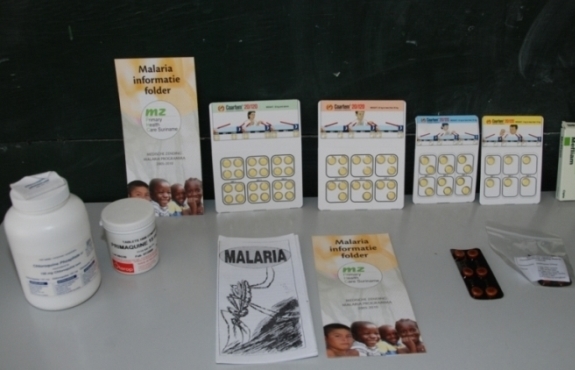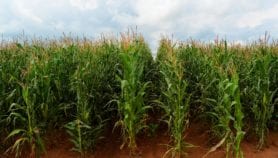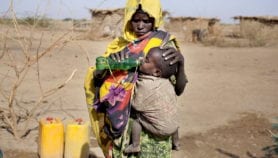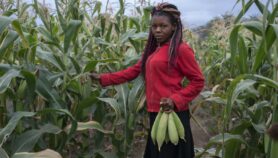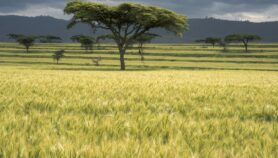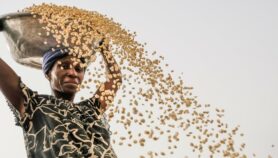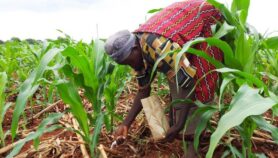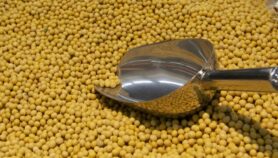By: Bernard Appiah
Send to a friend
The details you provide on this page will not be used to send unsolicited email, and will not be sold to a 3rd party. See privacy policy.
Health and food security stories were among our most popular in the second half of 2015, writes Bernard Appiah.
Africa’s most popular science and technology stories published by SciDev.Net’s Sub-Saharan Africa English regional edition in the second half of 2015, based on number of visits reflect the continent’s efforts at fighting diseases and improving food security through increased food production.
Other popular stories in our second and final installment covering the year included innovative ways of tapping communication for development.
Addressing Africa’s disease burden
Malaria and HIV/AIDS became popular health stories with readers and viewers during the second half of the year.
“The story showed that as African governments construct dams to electrify the continent, they should strengthen efforts to control the disease, including providing bednets.”
Bernard Appiah
In Nigeria, a study found that of 3,024 antimalarial drugs examined, 9.2 per cent were substandard. According to the story, the study by researchers from Nigeria and the United Kingdom presented a worrying challenge in the fight against the disease.
Experts cited in the story indicated that the findings could lead to increased resistance to the drugs and that there is an urgent need to identify manufacturers of fake medicines and reign in on them.
One of our top stories was about the impact of dams on malaria in Sub-Saharan Africa. A study showed that large dams could lead to more than one million malaria cases in Sub-Saharan Africa a year.
The finding was based on mapping of the distribution of 1,268 large existing dams and 78 large planned dams and malaria transmission across all countries in Sub-Saharan Africa. The story showed that as African governments construct dams to electrify the continent, they should strengthen efforts to control the disease, including providing bednets.
But an expert not involved in the study warns that more research should be conducted to assess the impact of vitamin D on diseases, adding that patients should not misinterpret vitamins as medicines for treating HIV/AIDS.
Another effort at fighting HIV/AIDS was a vaccine trial in humans that was set to start in Zimbabwe in October this year. The vaccine trial was also expected to be trialed in Mozambique and South Africa.
Increasing Africa’s food security
Stories on food security were also among our best performers during the second half of 2015.
One was about a report that identified gaps in research collaborations involving African and European partners, and called for the need to strengthen such networks. In particular, the report that was based on assessment of 74 Africa-EU food security research projects implemented between 1998 and 2014 identified little involvement in research of large businesses and smallholders.
In Kenya, a workshop in July saw the formation of a new institution to promote sustainable food systems in Sub-Saharan Africa and to address the challenges posed by climate change.
The African Ecosystem Based Adaptation for Food Security Assembly has a mandate to advocate for sustainable ecosystem-friendly agricultural systems. The story indicated that participants at the workshop agreed to form a trust fund to support ecosystem-based adaptation initiatives in Africa.
The second half of the year also saw popular stories about increasing the yields of crops such as maize and legumes. For instance, in Zimbabwe, a project is encouraging the use of earthworms to help the country’s smallholders improve soil fertility and thus increase crop yields.
Also, a low-cost nitrogen fixing technology in Zimbabwe is aiding increased yields of legume crops such as soya beans.
The Global Maize Program of the International Maize and Wheat Improvement Center (CIMMYT) also began a new project to boost the availability of disease-resistant, hybrid varieties of maize to smallholders at affordable prices in seven countries in Sub-Saharan Africa — Ethiopia, Kenya, Malawi, Mozambique, Tanzania, Uganda and Zambia.
A smallholder in Tanzania said that the hybrid varieties do well even in semi-arid land and that using the new varieties helped his maize yield more than doubled when compared with previous old varieties he planted.
A story on a session on nuclear technologies during the IAEA (International Atomic Energy Agency) Scientific Forum in Vienna, Austria in September this year showed the use of radioactive materials in agriculture.
The story mentioned some African countries including Ghana, Kenya, Mali, Tanzania and Uganda that have made progress at using nuclear technology to increase crop yields.
Our story on a three-year initiative for cocoa farmers in Ghana that indicated the project could increase cocoa production partly through climate change adaptation was also attracted many visits.
“An opinion advises African governments to take advantage of 3D printing technology to spur sustainable development on the continent.”
Bernard Appiah
Away from crops, we had a story about a five-year, US$15 million project that is helping smallholder farmers, particularly women in Ethiopia, Nigeria and Tanzania to identify and raise high-producing exotic and local breeds of chickens.
Communication for development
Three of our top stories in this half demonstrated the use of communication for sustainable development. In Kenya, an online tool that has information on Kenyan counties, seasons and attributes of crops to help smallholders select more than 200 varieties of commercialised crops such as maize and cassava. But an expert cautioned against overreliance on the new app, noting that it will not necessarily make farming attractive.
A blog on a workshop held in South Africa in September on communicating information about genetically-modified organisms (GMOs) made a case for countering misinformation on the safety of GMOs. In particular, the blog called for journalists to do more to educate the public on the safety of GMOs.Finally, an opinion advises African governments to take advantage of 3D printing technology to spur sustainable development on the continent. In particular, it calls for Africa to accelerate the process of transitioning to high-value manufacturing by getting and developing capabilities in 3D printing technology instead of merely relocating Chinese machinery to Africa.
In 2016, be on the lookout for more exciting stories on science and technology that impact development in Sub-Saharan Africa from our regional English edition. We will keep doing our best to bring to your door steps stories that touch on people’s lives and help them make informed choices.
This piece was produced by SciDev.Net’s Sub-Saharan Africa English desk.


